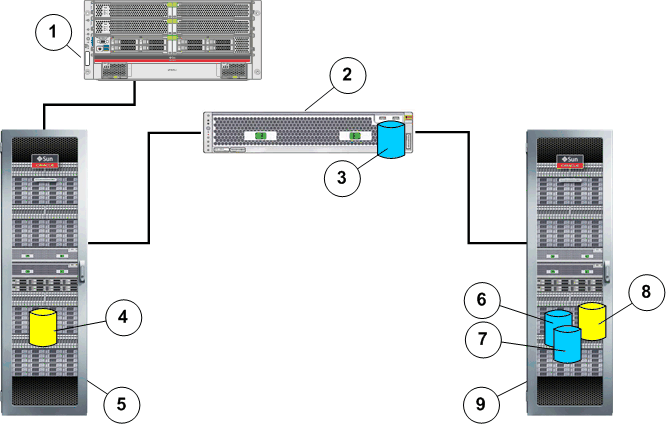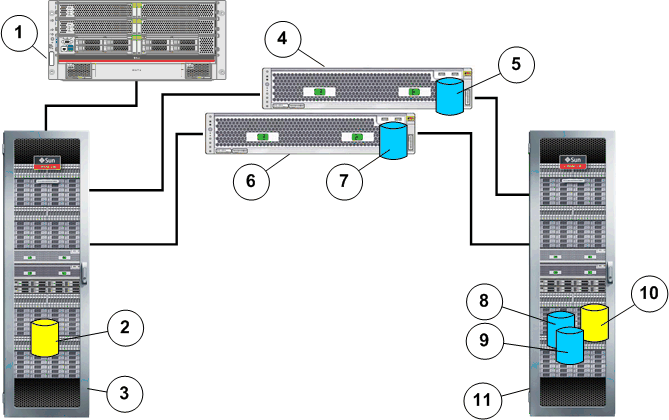Synchronous replication involves saving data simultaneously in primary storage and in secondary storage, within a 100‑kilometer radius, usually in the same campus or metropolitan area. Synchronous replication can be configured for standard or high availability requirements.
Synchronous replication requires at least one Replication Engine and is supported when the source LUN, the target LUN, and the Replication Engines are all attached to the same SAN fabric. Replication can also be synchronous when the source LUN and the target LUN are located in two data centers that are connected by an extended SAN fabric. Whenever data is written to primary storage, the data is simultaneously replicated to secondary storage.
For example, a typical synchronous replication configuration in a local site consists of a single Oracle MaxRep Replication Engine and two Oracle FS Systems located in the same SAN fabric.
Figure 1: Configuration for synchronous replication

Another example of synchronous replication includes adding a Replication Engine to each existing Replication Engine to provide high availability configuration. The two Replication Engines form an active‑passive cluster. One of the Replication Engines is in active mode. The other Replication Engine is in passive mode, ready to take over if the active Replication Engine should fail.
Figure 2: High availability configuration for synchronous replication

A full high availability configuration for synchronous replication consists of a cluster of two Replication Engines and two Oracle FS Systems, both on the same SAN fabric.